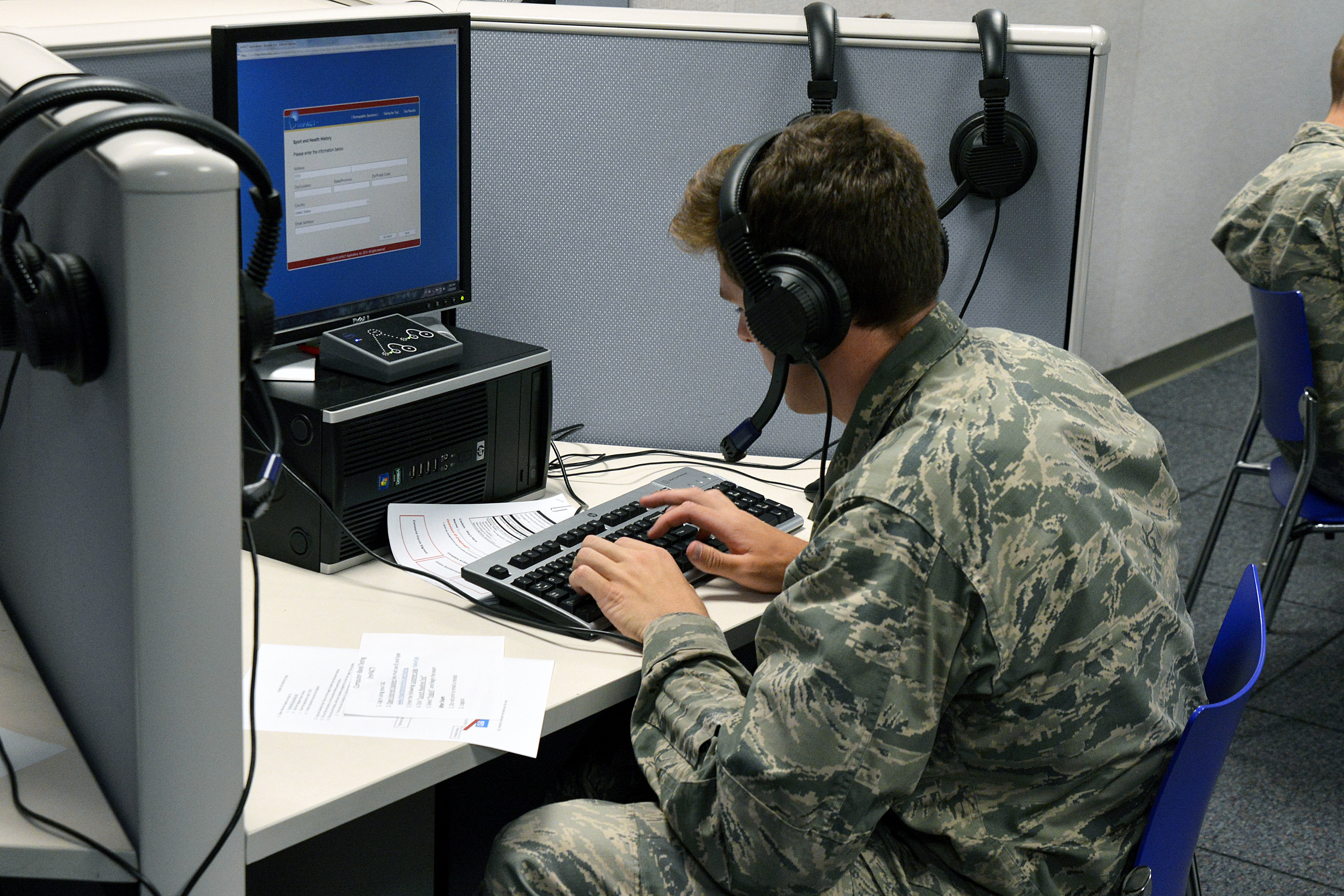
| Hundreds of basic cadets lined up at the Air Force Academy July 13 to help experts learn more about head trauma.
All Academy cadets are taking part in a three-year, $30M collaboration between the Defense Department and the NCAA to study concussions. Eighteen universities in the United States and the military service academies are participating in the research project. The study coincides with the White House Summit on sports concussions, a presidential commission created in May 2014 to encourage the identification, treatment and prevention of serious head injuries. Each basic cadet spent about an hour in a Fairchild Hall laboratory completing concussion history and symptom inventories, and balance, memory and cognitive tests. “The collected results of these evaluations will be compiled into a database and form a baseline of a cadet’s complete physical assessment,” said Col. Darren Campbell, director of the Academy’s Concussion Center. “By having a baseline, we then have something to compare when they are injured,” Campbell said. “We know what their ‘norm’ should look like.” This baseline is collected by computer-based neurocognitive assessments and one-on-one testing of brain and balance performance given when cadets are healthy, and compared to results when a cadet returns to duty or to the athletic field. Intercollegiate athletes at the Academy account for about 50 percent of concussions reported in the Cadet Wing, said Lt. Cmdr. Brian Johnson, a behavioral science professor at the Academy. “Regardless of participation in the national research study, all cadets are given the same level of care,” Johnson said. “We treat every cadet the same and we focus on this issue for long-term effect.” To comply with NCAA standards, the Academy has conducted neurocognitive testing on its athletes for more than 10 years. The Academy began testing all freshmen in 2014 as part of the DOD-NCAA study to collect a larger test group. “By using the same measures as the other sites, we can (compile) our data to paint a much clearer picture of what concussions and recovery times look like,” said Dr. Chris D’Lauro, a professor in the Academy’s Behavioral Science Department. Steve Broglio is an associate professor in exercise science at the University of Michigan, and the lead clinical care coordinator for the universities taking part in the study. The information collected by this testing could prove beneficial years in the future, he said. “The big goal here is to track people,” he said. “We’re trying to track the student. This is incredibly challenging and exciting.” Campbell said tracking a cadet’s head injury is part of caring for Airmen. “We want to provide the best medical care possible to our Airmen and cadets,” The Academy is ahead of the other universities and other military academies involved in the study because it’s conducting this baseline testing for the entire study body, said Dr. Jerry McGinty, director of sports medicine for the Academy’s Athletic Department. All basic cadets are scheduled to be tested by July 31st. More than 37,000 intercollegiate athletes and service members will be tested, McGinty said. Visit www.usafa.af.mil/news/story.asp?id=123420140 for more information on the study. ORIGINAL ARTICLE |


